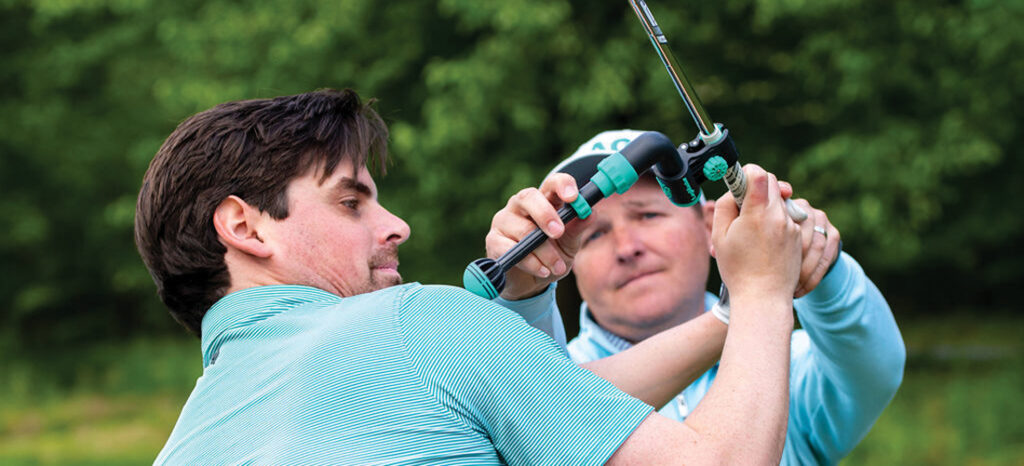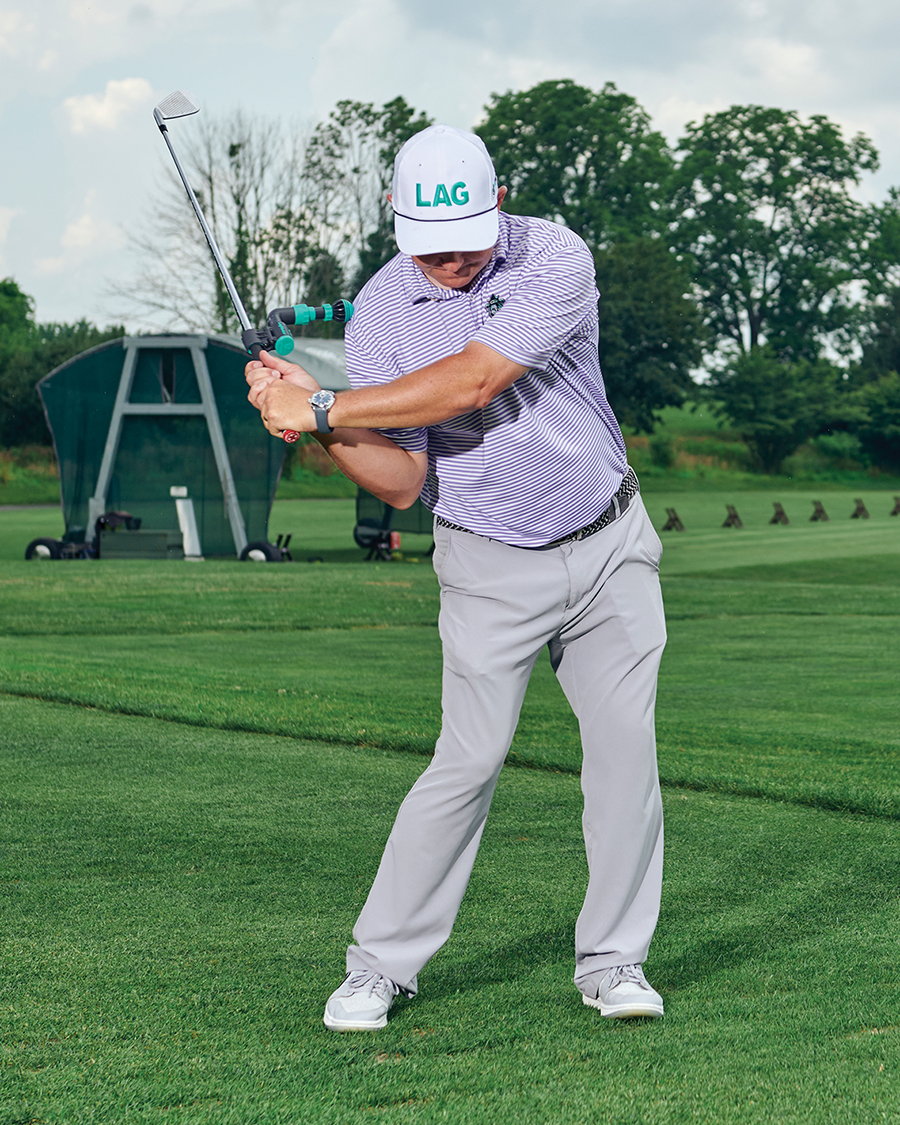Golftown Journal

Cool Aids
Teaching the feel of a swing
By Lee Pace
 The concept of the golf school was still in its infancy in the early 1980s, though pioneers like Peggy Kirk Bell at Pine Needles Lodge and Golf Club had already been entertaining guests for a quarter of a century for multi-day immersions in golf instruction, competition and fellowship.
The concept of the golf school was still in its infancy in the early 1980s, though pioneers like Peggy Kirk Bell at Pine Needles Lodge and Golf Club had already been entertaining guests for a quarter of a century for multi-day immersions in golf instruction, competition and fellowship.
The management at Golf Digest magazine believed that golf schools at top-echelon resorts taught by the game’s best instructors would be an excellent way to promote the brand and earn a buck, and so by 1982 the Digest schools visited Pinehurst each spring and fall, bringing instruction luminaries like Jim Flick, Jack Lumpkin, Bob Toski and Gary Wiren to the Sandhills.
Wiren spent time not only on the renowned “Maniac Hill” practice ground at the flagship resort, but he and Peggy Kirk Bell were close friends, and Wiren spoke and taught often down Midland Road at Pine Needles.
Today, one of the foundational training aids in the golf instruction centers at both Pinehurst and Pine Needles (and probably most practice ranges in the Sandhills) is one of Wiren’s inventions. In the early 1980s Wiren played off a favorite drill from three-time British Open champion Henry Cotton in which Cotton had golfers simulate impact by swinging against an old tire — shaft leaning forward, hips clearing and head behind the ball. Wiren thought a softer and safer rendition would be to manufacture a large bag of durable fabric and stuff it with towels.
The bright yellow Impact Bag was introduced in 1982 and became one of the most noted training aids in history. It launched Wiren into a sideline of developing and nurturing the creation of devices to help PGA professionals teach and golfers to learn. Today, at 89 years of age, Wiren and his family operate a business called Golf Around the World, built around an online sales catalog of training devices.
“Telling a golfer is one thing,” says Wiren, who played in the 1994 U.S. Senior Open at Pinehurst wearing knickers and carrying his own bag. “Letting them feel is altogether different.”
Wiren lives in West Palm Beach, Florida, and still makes regular trips each January to the PGA Show in Orlando, where a growing section of the floorspace is dedicated to golfing entrepreneurs who have created better mousetraps to augur a player’s ability to find the proverbial light switch in their golf game.
You might find Jim Hackenburg, who was teaching on Martha’s Vineyard in 2007 when he had the idea of attaching a rubber ball about the size of an orange to a flexible shaft that was designed to help golfers feel the proper motion, sequence and tempo of the swing. Today the Orange Whip is as ubiquitous in golf instruction as the Impact Bag.
Holding court in his booth devoted to his Tour Striker line of training aids is Martin Chuck, an Arizona-based teaching pro. Chuck, frustrated in 2008 by his students’ inability to strike the ball with forward shaft lean, took a 5-iron into his club repair shop and ground off the bottom four grooves of the club, rendering it worthless unless the golfer hit down on the ball sufficiently to force contact in the middle of the clubface — not the bottom edge. Any shot hit on the bottom of the clubface would simply dribble along the ground.
Bernie Fay was a blue collar worker and part-time handyman in Chicago who loved golf and a decade ago conceived a 42-inch polymer shaft with an attached elbow cuff that promotes a wider turn and keeping the left arm straight. He put his life savings into what he calls the “Most Important Stretch In Golf,” or MISIG, for a business name.
“I think that golfers know something that other people do not,” Fay says. “They have something in them that others might not: the light of hope. They have figured out spiritual art. Something beautiful. It’s pure, and I am awestruck when I think about it. The light of hope is always on them.”
This year one of the more novel introductions to the eternal hope for a better golf game is Mike Dickson, a Maryland-based instructor who has created and manufactured a line of devices under the LagMaster banner. Like Wiren, Chuck and many others before him, Dickson was confounded over 17 years teaching at Congressional Country Club in Washington with the average golfer’s tendency to “cast” the club, releasing it well before impact.
But instead of solving the problem at the bottom of the move, Dickson’s LagMaster addresses the issue at the top of the backswing and the early part of the downswing. The device is placed on the grip of the club, and with a properly executed backswing, one end of it touches the right shoulder at the top of the backswing (for a right-handed golfer). The feel Dickson is teaching is to keep the end of the device touching the shoulder into the downswing until the left arm is parallel to the ground. To do that, the golfer has to retain the 90-degree angle of the club and the left arm.
Presto: No cast, and an eventual compression of the ball at impact.
Dickson looks around him at the Orange County Convention Center in January 2024 and takes in all the inventions.
“The whole goal of any training aid in this building is to give somebody a sensation, a feeling without me having to describe it or put my hands on your body,” he says. “If you feel it, you’re going to own it.”
Dickson is a proponent of Homer Kelley’s The Golfing Machine, one of the key elements being the action of the right shoulder. Kelley teaches that the right shoulder swings down “on plane,” along the same line as the club shaft and staying “back and down” until after the hit. Tom Watson credits that move with helping him during his late-career success on the PGA Champions Tour.
“That’s what I am trying to accomplish with the LagMaster,” Dickson says. “You have to turn the right shoulder under to maintain the angle. If I can give you a good grip and sequence you the right way, all this other mess goes away. It’s been fun to watch it evolve.
“A guy ordered the device and wrote back immediately. He said, ‘Mike, after the first three swings, I couldn’t believe how different it felt.’ I see that every day.”
Dickson left Congressional in 2021 to start his own golf academy at Little Bennett Golf Course in Clarksburg, Maryland. He teaches there and runs his LagMaster as a side hustle that, he says, “looks like it’s going to be bigger.”
Indeed, the water is warm in the training aids ocean. PS
Lee Pace has written about golf in Pinehurst and the Sandhills for more than three decades. Write him at leepace7@gmail.com and follow him @LeePaceTweet.
